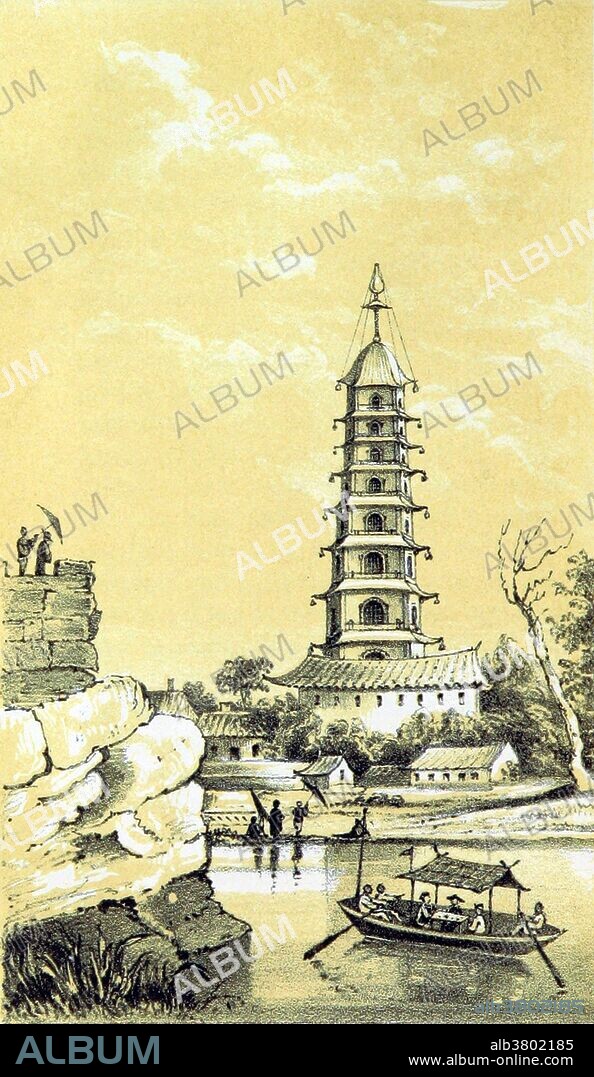alb3802185
Porcelain Tower of Nanjing, 19th Century

|
Add to another lightbox |
|
Add to another lightbox |



Title:
Porcelain Tower of Nanjing, 19th Century
Caption:
The Porcelain Tower (or Porcelain Pagoda) of Nanjing, also known as Bao'ensi (Temple of Repaid Gratitude), is a historical site located on the south bank of external Qinhuai River in Nanjing, China. It was a pagoda constructed in the 15th century during the Ming Dynasty. The tower was octagonal with a base of about 97 feet in diameter. When it was built, the tower was one of the largest buildings in China, rising up to a height of 260 feet with nine stories and a staircase in the middle of the pagoda, which spiraled upwards for 184 steps. The top of the roof was marked by a golden pineapple. It was first discovered by the Western world when 17th century travelers visited it, sometimes listing it as one of the Seven Wonders of the World. It was mostly destroyed in the 19th century during the course of the Taiping Rebellion. European Entitled: "View of the Pocelain Tower from the Grand Canal." Image taken from page 296 of An Aide-de-Camp's Recollections of Service in China, a residence in Hong Kong, and visits to other islands in the Chinese seas, 1844.
Credit:
Album / Science Source / British Library
Releases:
Model: No - Property: No
Rights questions?
Rights questions?
Image size:
2435 x 4200 px | 29.3 MB
Print size:
20.6 x 35.6 cm | 8.1 x 14.0 in (300 dpi)
Keywords:
1844 • 19TH CENTURY • ART • ARTWORK • ASIA • ASIAN • BAO'ENSI • CHINA • CHINESE • DRAWING • EAST ASIA • EASTERN ASIA • EMPIRE OF THE GREAT QING • ENGRAVING • GREAT QING • HISTORIC • HISTORICAL • HISTORY • ILLUSTRATION • IMPERIAL CHINA • MANCHU DYNASTY • NANJING • PAGODA • PORCELAIN PAGODA • PORCELAIN TOWER • QING DYNASTY • TEMPLE OF REPAID GRATITUDE • TOWER
 Pinterest
Pinterest Twitter
Twitter Facebook
Facebook Copy link
Copy link Email
Email

